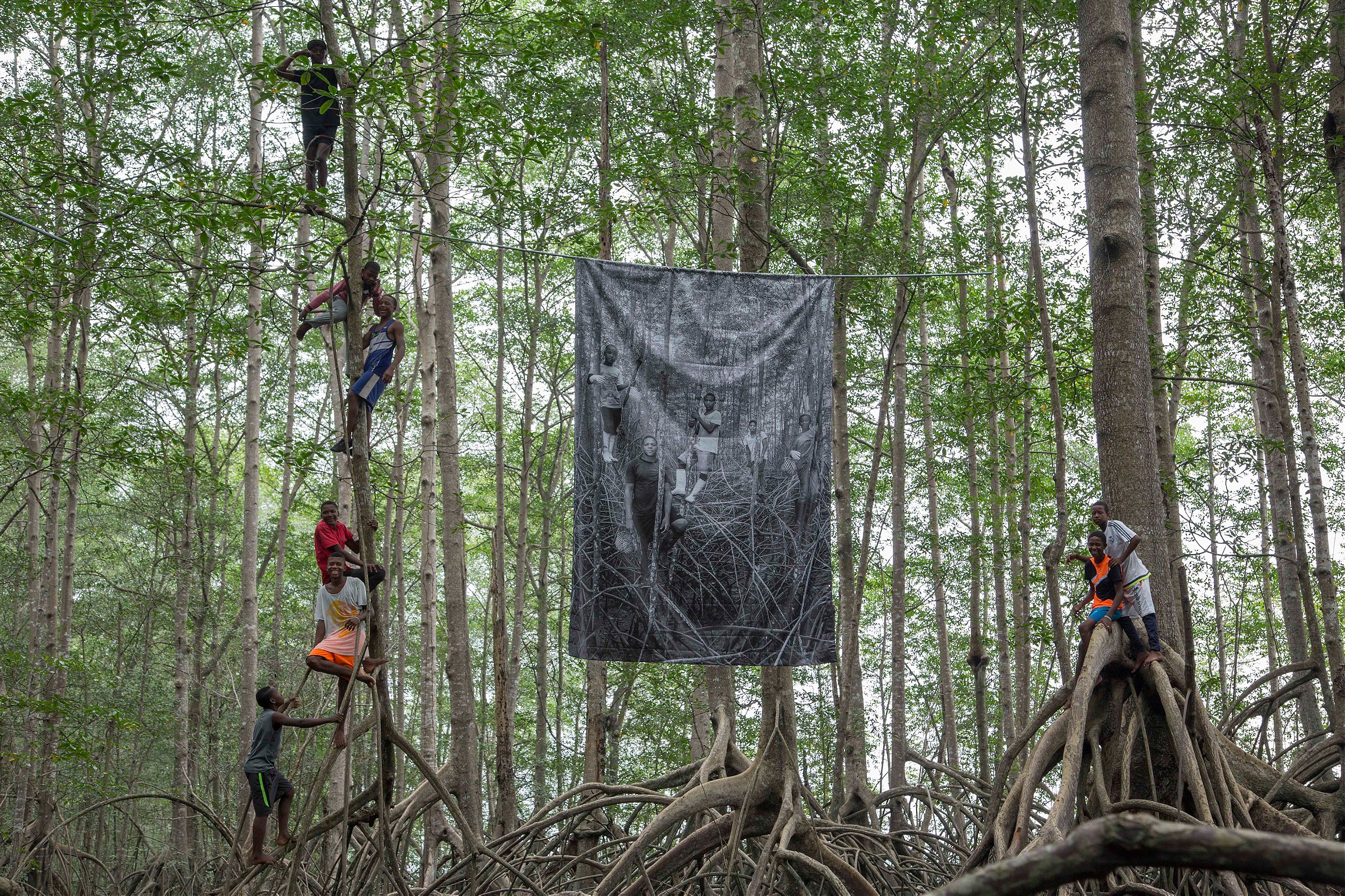Felipe Jacome has been documenting life among the world’s tallest mangroves in Ecuador. Last year, he went back to hang canvas prints from the trees.
The Cayapas Mataje Reserve, in the northwest corner of Ecuador, is home to 26 different communities and holds the world’s tallest mangroves. It’s in these mangroves that children from the local communities hunt for black cockles, and they’re the subject of photographer Felipe Jacome’s latest project. Jacome has published and exhibited his work internationally, but last year he brought canvas prints into the mangroves to display the images for the local residents. He recently spoke to R&K about his project.
Roads & Kingdoms: Why did you bring these canvases back to the mangroves?
Felipe Jacome: I saw it as almost a natural step to give this work back. It’s going to be 10 years since I’ve been going back there, sharing all this time and creating all these relationships with the community and with these children. Even though I had always brought back 4 x 6 photos, they never really knew what the full piece looked like, what the photo essay looked like or what the photo exhibit looked like. I wanted to show that to them.
[Related: This photographer captures the pain and suffering of Peru’s trans women]

R&K: What inspired you to give these images back to the people you’ve captured in your work?
FJ: It started while I was working in Haiti, where I saw a lot of photographers come, take photos and then leave. People were quite frustrated about that. So I thought I should give the photos back and began thinking about where and how to do it. The obvious thing would have been to organize something in a small plaza in the middle of the community or on one of the piers. But this was more than showing the people their photos—it was also giving back the images to the forest, to this ecosystem, to these trees and to this wonderful place.
R&K: What did the community think about the idea?
FJ: When I first asked some of the community leaders if this idea was doable, they were excited. “We are very good climbers,” one of them said. So we went ahead and scouted a place within the forest where we could place a good number of these photos. We ended up putting 10 photos and these big canvases up. We first did a pilot with one photo to see what it would look like, and then we decided to go ahead and print the other nine other photographs for the exhibit.
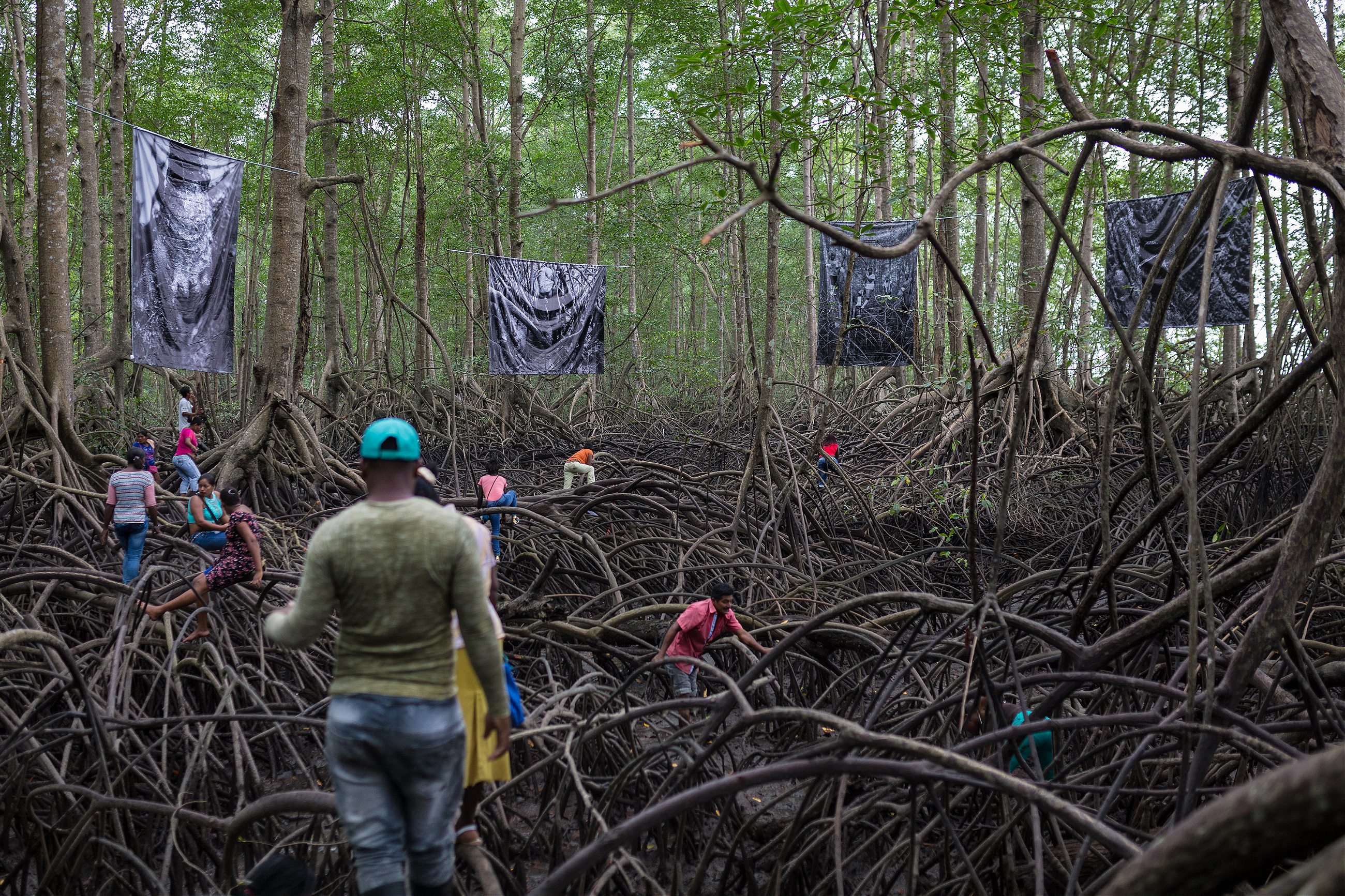
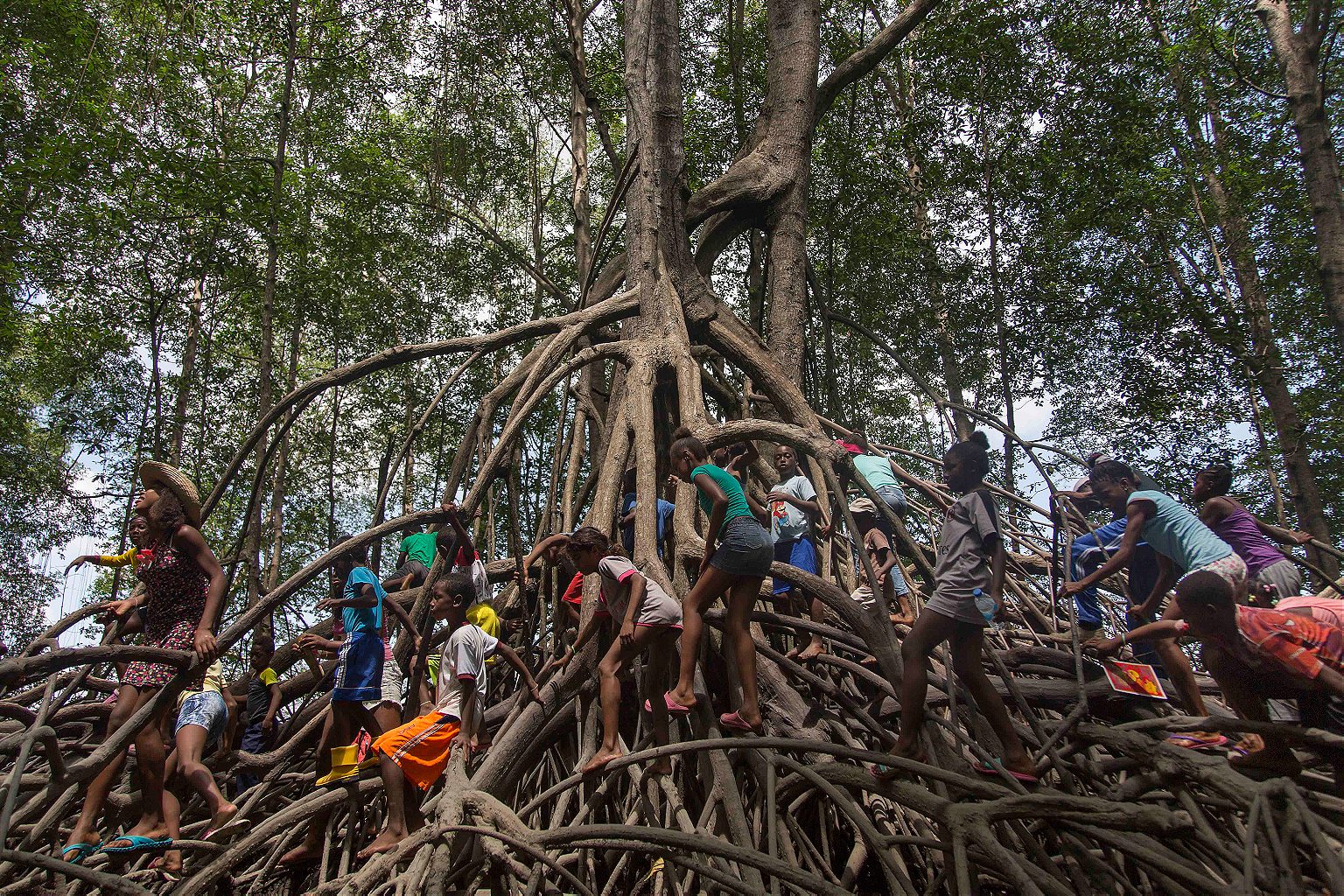

R&K: What kind of reaction do you get from people outside Ecuador?
FJ: Most people don’t really know or understand mangroves. Some people have seen mangroves maybe in Florida or in Southeast Asia, but they’re smaller. To see these very, very, very large mangroves that are 30 to 40 meters tall, it’s quite impressive. People are surprised because they’ve never seen anything like that. I had never seen something like that before doing this project. I didn’t even know it existed.
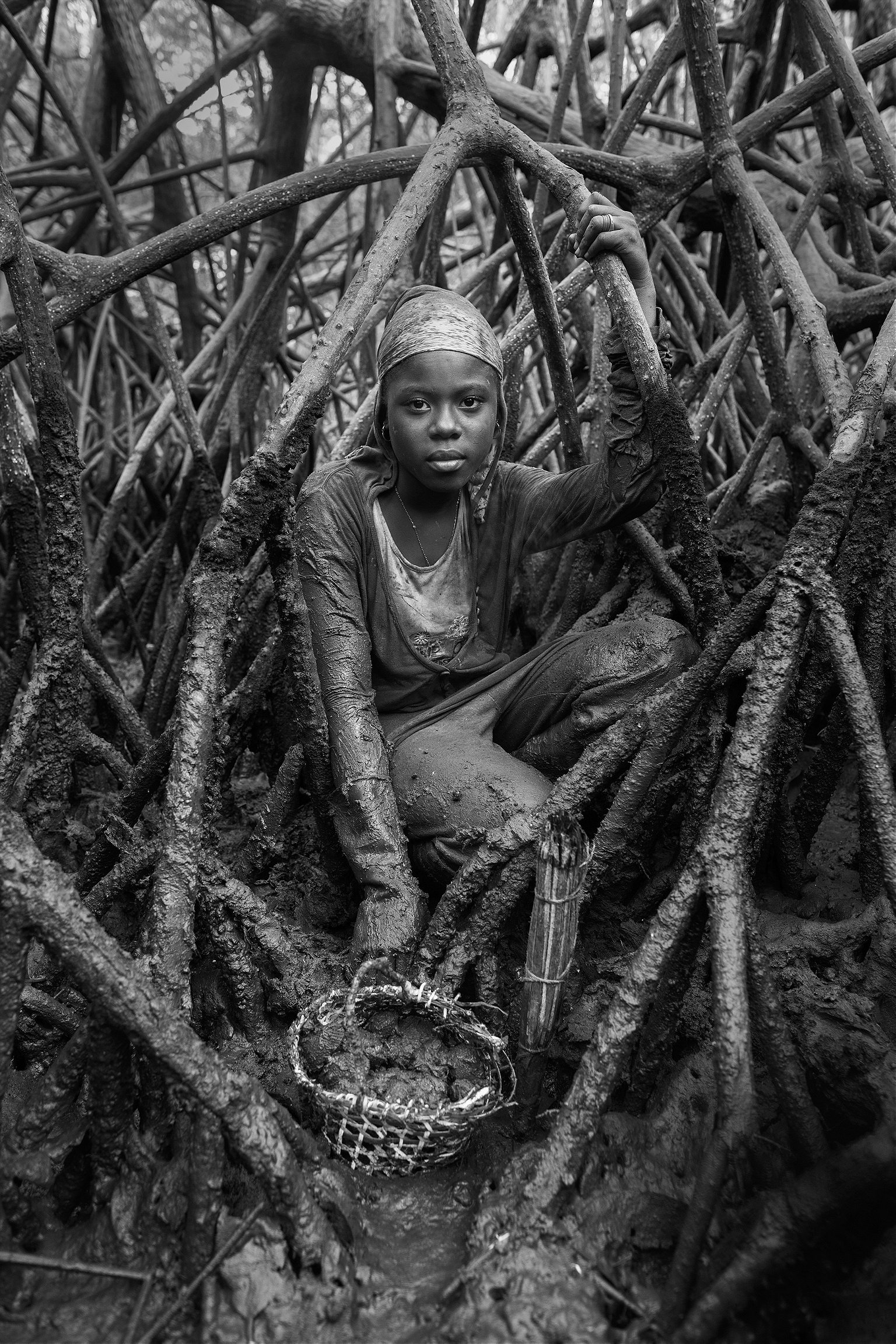
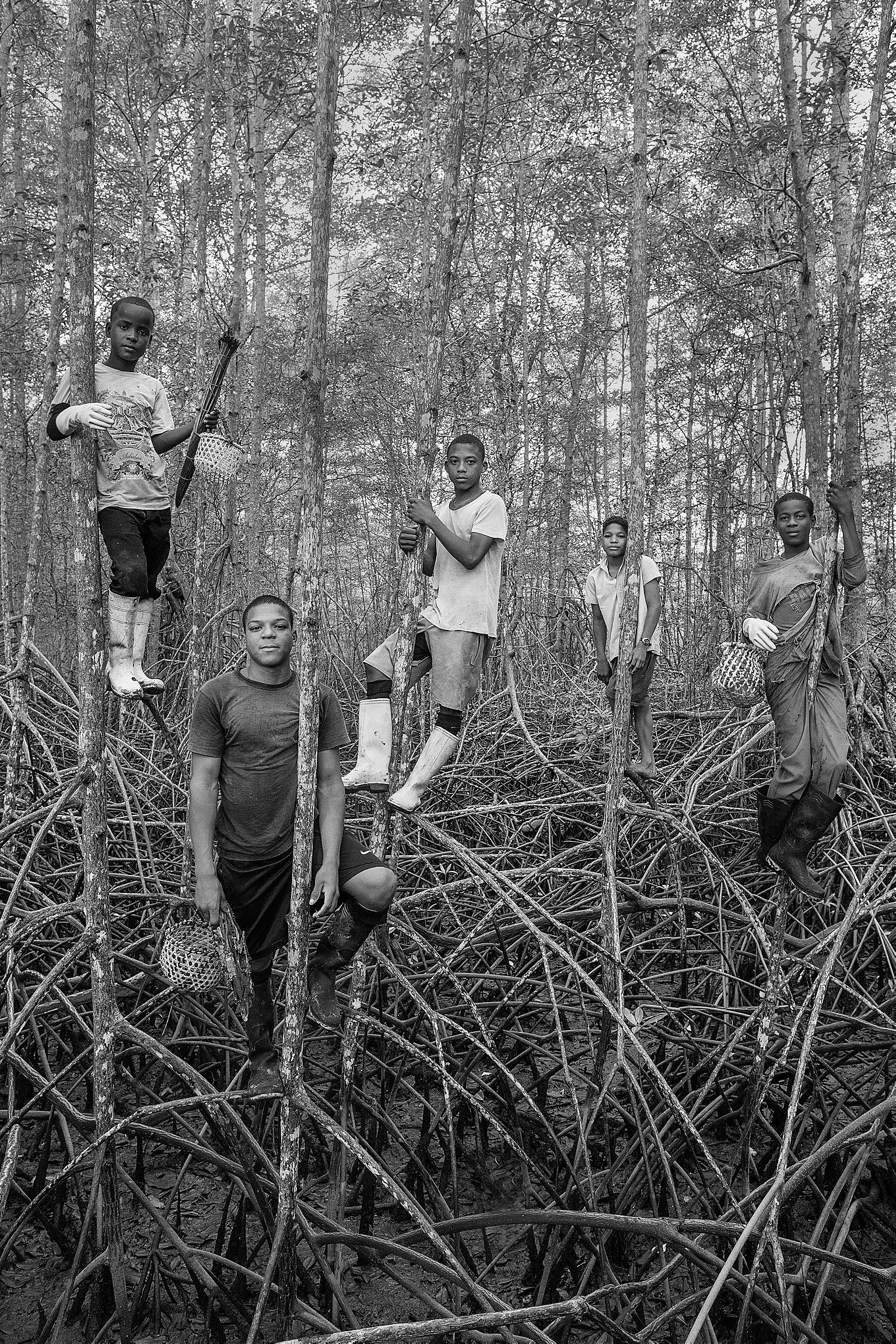
R&K: Are there any environmental issues facing these mangroves?
FJ: Most of the mangroves along the Ecuadorian coast were cut down in order to make shrimp farms, but a few small reserves did end up being created. The Cayapas Mataje Reserve, the one I’ve been documenting, is the biggest and is still left intact. The pressure to cut down these trees has kind of stopped because of the creation of the reserve.
But the pressing issue right now is harvesting cockles because there is a tremendous demand for them. If you pick shells that are too small, then they don’t have time to reproduce. The amount of time or the number of shells being harvested per day today is much less than it was 10 years ago.
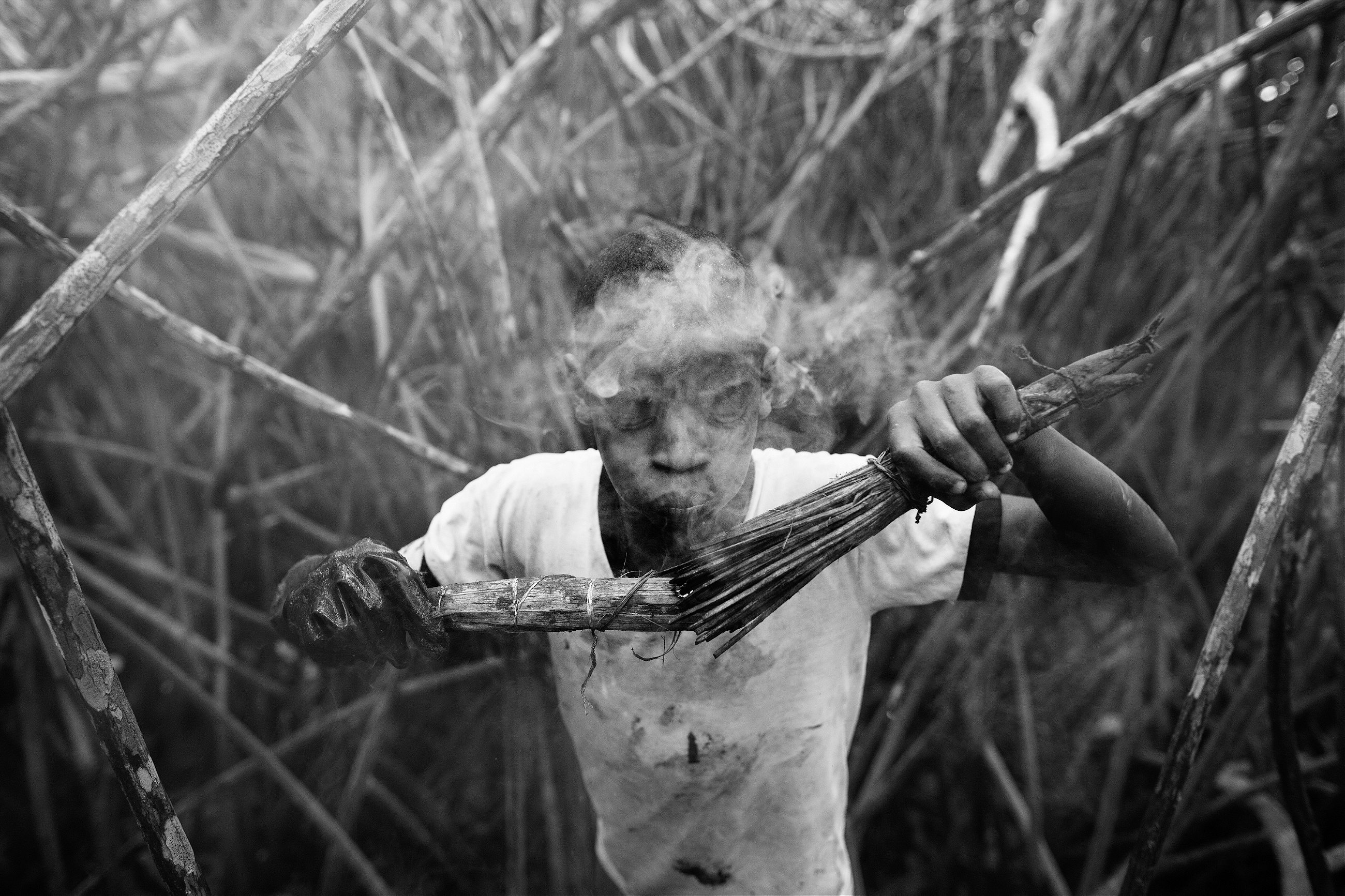
R&K: What are you working on next?
FJ: I have two projects: first, in Ecuador, about an indigenous population and part of a rainforest that has been affected by oil exploitation for the past 20 to 30 years. I’m trying to transfer these portraits onto the leaves of the rainforest through a chloroform process.
I’m also starting a project in Haiti on the lives of refugees along the Dominican border.
R&K: And are you going to continue this Mangrove Project?
Felipe: I can’t go there right now because the security situation has deteriorated quite a bit. The mangroves are near the border with Colombia—and one of the main routes for the drug trade. Guerilla groups in Colombia have come head to head with the Ecuadorian army in recent years. Three journalists were kidnapped and executed last month, including a friend of mine.
But I’m in constant touch with members of the community and they’ve been the first ones to tell me that I might want to take a break. They told me I could easily get snatched up. The people there are quite worried but hopefully the situation will calm down soon.
